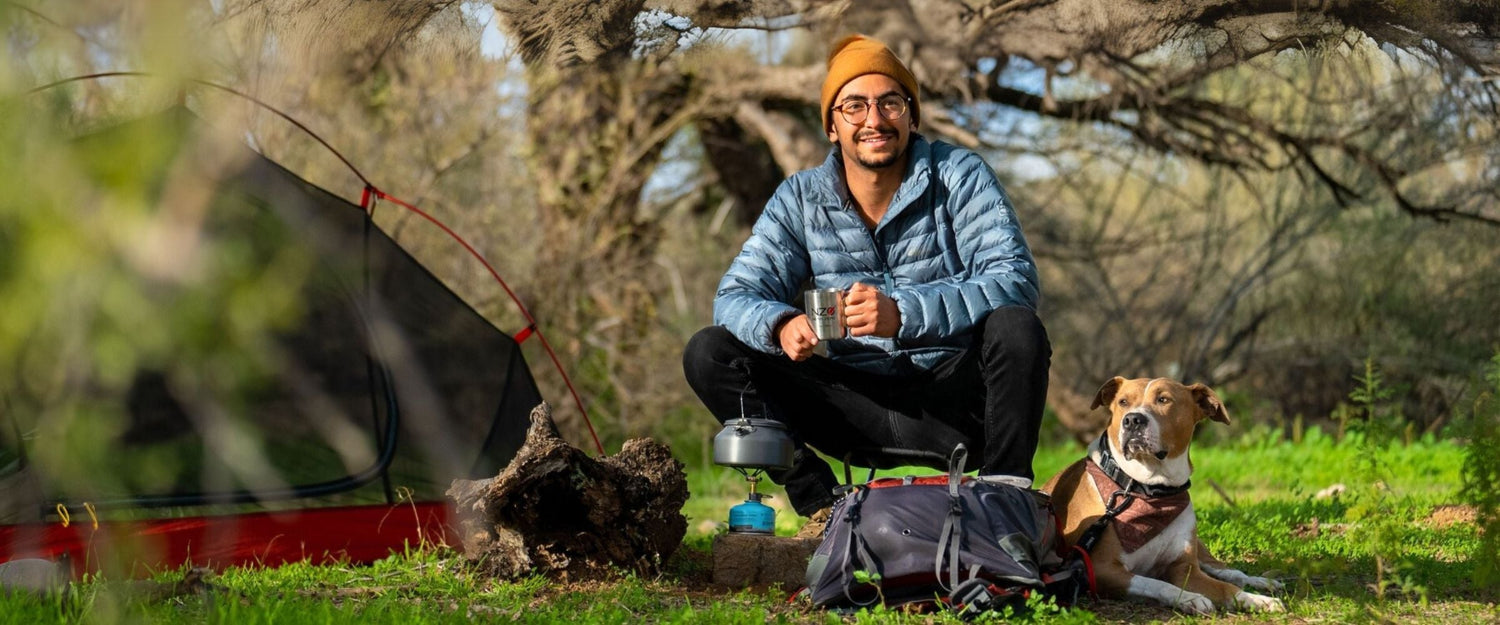
Tips on Cooking Outdoors in Cold Weather
Cooking outdoors is always an adventure, whether it's because you need to get creative or hauling a lot of food you're hoping will turn out for mealtime. However, when temperatures drop, it can become a real challenge. Whether camping or backpacking in chilly weather, knowing how to prepare meals efficiently and safely is key to staying warm, energized, and satisfied. Here are our tips and tricks to make cooking in the cold a breeze.
Choose the Right Stove
Make your life easy by buying the Near Zero Mini-Stove. Cold weather can impact the performance of your cooking gear, especially your stove. Here are some stove tips to consider:
-
Liquid Fuel Stoves: These work well in colder conditions compared to canister stoves. They perform reliably even when temperatures drop below freezing.
-
Cold-Weather Fuel Canisters: If you prefer canister stoves, use isobutane-propane blends designed for low temperatures. The mini propane we sell at Near Zero works perfectly with our Mini-Stove and other small stoves.
-
Wind Protection: Always use a windscreen to shield your stove and conserve heat. Be cautious not to trap too much heat, as it can damage canisters.
Prep Meals in Advance
Cold weather can make detailed cooking tasks more difficult. Prepping meals ahead of time saves effort and reduces exposure to the cold.
-
Pre-Chop Ingredients: Slice vegetables, measure spices, and pre-cook proteins at home.
-
One-Pot Meals: Focus on simple, hearty dishes like soups, stews, and pasta that can be cooked in a single pot.
-
Freezer Bags: Use freezer bags for pre-mixed ingredients. Just add boiling water for a quick meal.
Plan for High-Calorie Meals
Cold weather burns more calories, so your body needs extra fuel to stay warm and active.
-
Focus on Fats and Proteins: These provide sustained energy. Think cheese, nuts, nut butter, sausage, and dehydrated meats.
-
Carbohydrates for Quick Energy: Instant rice, noodles, or oatmeal are great options.
-
Snacks to Supplement: Pack calorie-dense snacks like chocolate, trail mix, and energy bars for a quick boost.
Insulate Your Cooking Setup
Heat retention is crucial when cooking in the cold. Use these hacks to keep food warm longer:
-
Pot Cozies: Wrap your pot in an insulating sleeve or homemade cozy to retain heat.
-
Keep Lids On: Cover your pot while cooking to speed up boiling and reduce heat loss.
-
Pre-Warm Ingredients: To prevent key ingredients, like water or canned goods, from freezing, store them near your body.
Stay Hydrated
Dehydration is a hidden risk in cold weather because you may not feel as thirsty. Drink warm beverages to stay hydrated and maintain your core temperature. Get our hydro-bladder or water filters to ensure you never run out of water.
-
Hot Drinks: Tea, coffee, or hot chocolate are comforting and hydrating.
-
Electrolytes: Add electrolyte tablets or powder to warm water to replenish essential minerals.
-
Melt Snow Safely: If you're melting snow for water, boil it to ensure it's safe to drink.
Keep Cooking Gear Functional
Cold weather can make handling gear challenging. Here's how to prepare:
-
Use Gloves with Grip: Wear thin, insulated gloves that allow dexterity while handling gear.
-
Prevent Freezing: Store utensils, lighters, and stoves in insulated pockets or your sleeping bag to prevent them from freezing.
-
Bring Backups: Pack extra lighters or waterproof matches in case one fails. Our fire-starter kit provides multiple ways to keep you and your fire going!
Timing Is Everything
Cooking in the cold requires efficiency to avoid prolonged exposure. Plan your meals and cooking times carefully:
-
Start Early: Days are shorter in winter, so start cooking before it gets dark.
-
Keep It Simple: Opt for meals that cook quickly to minimize time spent in the cold.
-
Pre-Boil Water: Boil water for cooking and warm drinks at the same time to save fuel and time.
Clean Up Smartly
Cold weather can make cleaning up daunting, but it is essential to prevent food smells that attract wildlife. Use Leave No Trace rules when cleaning up!
-
Use Warm Water: Heat a small amount of water for cleaning to prevent freezing.
-
Scrape First: Use a spatula or snow to scrape off leftover food before washing.
-
Pack Out Waste: Dispose of all food scraps and packaging properly.
Cooking outdoors in cold weather might initially seem intimidating, but with the right preparation, mindset, and gear from Near Zero, it can be an enjoyable part of your adventure. From hearty meals to warm drinks, taking the time to cook thoughtfully will keep you energized and cozy as you explore the great outdoors.

